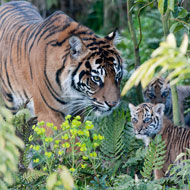We do love Christmas plants around the house during the festive season.
Particularly festive is the Poinsettia brightening the dark winter evenings and
adding that splash of Christmas colour. It just would not be Christmas without
poinsettias! You may be surprised to hear we have them in our homes and we
often receive the comment from family “I can’t believe that you of all people
have Poinsettias out around your pets, knowing that they can be poisonous.”
And
this is where we can assure, and our guests, that poinsettias are very
over-rated as a toxicity. Their ability to truly result in toxicity has long
ago been hybridized away. Worst case scenario with ingestion of this colourful
plant is oral and gastrointestinal upset, and in most cases it is mild and
relatively limited. If the milky sap is exposed to skin, dermal irritation
(including redness, swelling, and itchiness) may develop. Rarely, eye exposure
can result in a mild conjunctivitis (“pink eye” secondary to inflammation).
Signs are self-limiting and generally don’t require medical treatment unless
severe.
To be on the
safe side, keep your Mistletoe out of reach of your dogs in the holidays and if you suspect your pet has ingested mistletoe, contact us at the
practice.
Holly also can cause vomiting, diarrhoea and depression but again, these
are generally mild.
If ingested, most pets lip smack, drool, and head shake
excessively due to the mechanical injury from the spiny leaves.
Lilies are often received as in a Christmas bouquet. Our advice would be
to remove the Lilies, and sadly never have them in your house. These are highly
toxic to pets with minor signs such as tissue irritation to the mouth, tongue,
pharynx, and esophagus. Clinical signs of drooling, pawing at the mouth,
foaming, and vomiting may also be seen. The more dangerous, potentially fatal Lilies are ‘True Lilies’. Examples of some of these dangerous Lilies include
the Tiger, Day, Asiatic hybrid, Easter, Japanese Show, Rubrum, Stargazer, Red,
Western, and Wood Lilies – all of which are highly toxic to cats! Even small
ingestions (such as 2-3 petals or leaves) – even the pollen or water from the
vase – can result in severe, acute kidney failure. Other types you need to be
aware of include Lily of the Valley. This type does not cause kidney failure,
but can cause life-threatening heart arrhythmias and death when ingested by
dogs or cats.
If your cat is seen consuming any part of a Lily, bring your cat (and
the plant) immediately to a practice for medical care. The sooner you bring in
your cat, the better and more efficiently the Lily poisoning can be treated.
Don’t let this put you off our beautiful Festive plants. Enjoy them in
your home, just select them carefully and think about ‘safe’ positions. Merry
Christmas!




















